Recommendation points
- Anti-pollution systems
- Anti-pollution grates
- Modular coatings
- Dirt-resistant carpets
- Overview and characteristics of anti-pollution products from different manufacturers
- Tips for choosing a stain-resistant coating
- Care and maintenance of anti-dirt carpets
Mud covers protect the premises from dust and dirt that is brought in from the street. In the article, we will describe in detail the types of protective coatings, the features of their application, and also give a number of practical recommendations for choosing high-quality and affordable protective carpets and door mats..
About 90% of pollution enters the premises from the street. Sand, dust, moisture are introduced on the soles of shoes – everything that worsens the appearance of the floor covering and leads to its rapid wear.
To maintain cleanliness inside the premises, special coatings have been developed, which are placed at the entrance to the building. Safety carpets serve two main purposes:
- effectively cleans dirt from the soles of shoes;
- retain moisture and dirt inside themselves, preventing them from spreading outside the entrance vestibule.
Anti-pollution systems
The modular dirt protection system is a comprehensive approach to solving the problem of building cleanliness. The system includes three successive stages and involves the use of three types of coatings that protect against dirt.
First level settles down outside the premises – on the terrace, porch or directly in front of the front door. The antisplash is placed in pits (niches) or on the surface. Usually these are honeycomb honeycomb modules made of an aluminum profile. The design includes inserts made of rubber or a stiff brush. The first stage removes the coarsest dirt and snow.
The optimal length of the carpet of the first degree of protection is 3-4 meters – this is exactly how much you have to walk so that the soles are maximally cleaned of dirt.
Second level located in doorways or vestibule space. The main task is to remove fine dirt fractions and maximize moisture absorption. Small hole diameter aluminum mudguards or moisture-wicking vinyl-backed carpets can do this..
Third level protection is carried out already inside the building (stairs, corridor, hall or lobby). In this area there are soft polypropylene or polyamide carpets on a rubber backing. The task of the coatings is the final cleaning of shoes, the collection of residual water and sand.
All coatings that prevent the spread of dirt can be roughly divided into three categories:
- antisplash grilles;
- modular coatings;
- anti-dirt carpets and rugs.
Anti-pollution grates
Mudguards – stacked construction with a wide variety of cleaning elements that are attached to supporting arched aluminum profiles.
Grilles can have the following types of inserts:
- embossed rubber – suitable for places with medium traffic;
- anti-slip vinyl – are highly wear-resistant;
- weather-resistant plastic – located outside the building;
- pile or with brushes – have high absorbent and cleaning capabilities (second degree of protection against dirt);
- optional aluminum scrapers – the first level of protection for high-traffic areas.
Advantages of mudguards:
- the ability to combine several different inserts for better cleaning;
- aesthetic appearance;
- do not harm shoes and floor surfaces;
- prevent slipping;
- resistance to aggressive environments, temperature fluctuations.
The disadvantages of the gratings include their high cost (about 60-180 USD / m2) and the need for service – it is better to trust the specialists with high-quality cleaning.
Modular coatings
Modular systems are successfully used both outside and inside the building. Some models are used in technical rooms, kitchens, showers and swimming pools. The cover is made of elastic wear-resistant PVC, it can have different heights (8–20 mm) and mesh sizes (small, medium and large).
Advantages of modular rugs:
- you can buy a ready-made coating or make it to order according to individual sizes;
- high resistance to temperature extremes (from -40 to +50 ° С);
- possibility of installation in a pit or on a floor surface;
- a wide range of color solutions makes it possible to choose a module in accordance with the interior;
- affordable cost (about 15 USD / m2).
This coating does not absorb moisture, therefore it can only be used in combination with other dirt-protecting elements..
Dirt-resistant carpets
Dirt-resistant carpets are made from sisal, textile or vinyl fiber. They are located indoors, perform a practical and aesthetic function, being part of the interior.
It is interesting:pile carpets can hold up to 4 kg of sand and absorb up to 7 liters of water per 1 m2.
Advantages of antisplash carpets over conventional carpets:
- abrasion resistance;
- increased hygroscopicity;
- the presence of a rubber base that prevents slipping and retains dirt inside;
- ease of care.
Bristle coatings are available in a wide color palette and can be used to decorate an office, shop or apartment..
Overview and characteristics of anti-pollution products from different manufacturers
Table. Comparative characteristics of mudguards
Supplier company “AS-Oblik” “Alsagor” Italmas Izhora-Stroy Type of inserts polyamide and plastic brushes textiles and aluminum scrapers rubber profile reinforced with composite material aluminum cleaning comb galvanized extruded profiles Operating temperature range from -60 to +60 ° С from -60 to +60 ° С from -50 to +50 ° С from -40 to +70 ° С from -40 to +50 ° С Height, mm 22 22 20 23 20 Installation method in a pit or on a floor surface in a pit or on a floor surface into the pit in a pit or on a floor surface in a pit or on a floor surface Price per m2, at. e. 180 140 40 150 32 Table. Comparative characteristics of mud protection modules
Supplier company “Shine” “Enterline” Standartpark Manufacturer country Russia Russia Ukraine Material Pvc PVC with elastomer Pvc Structure middle cell large, height 9 mm Z-shaped structure Properties non-slip surface, multiple use possible anti-slip, trauma-proof permissible intensity of passage 5000 people / day; anti-slip Scope of application territory near the house, children’s, sports grounds, swimming pools pools, vestibule coverings outside the building or in the vestibule Price per m2, at. e. 7 20 13-15 Table. Comparative characteristics of antisplash carpets
Supplier company “AS-Oblik” Kleen-Tex Standartpark GUMMI Manufacturer country Belgium Austria Ukraine Russia Top material polyamide thread, sheared pile twisted unbreakable polyamide polyamide, twisted pile polyamide, embossed surface The basis rubber rubber rubber rubber crumb Pile height, mm 7 12 12 ten Availability of decor not not not Yes Water absorption, l / m2 5-6 five 6-7 7 Price per m2, at. e. 27 20 26 20 Tips for choosing a stain-resistant coating
- For public buildings, it would be most rational to install all three levels of dirt protection.
- On the porch of a private house, it is better to place a compact lattice with aluminum profiles and brushes.
- It is enough to buy a dirt-protective mat for the entrance hall to the apartment, since there are already metal grilles for cleaning shoes at the entrance to the staircase.
- Modules are suitable for the playground and the pool area.
- In office and commercial premises, it is better to replace large-mesh modules with a plastic coating with a fine mesh, in which the heels of women’s shoes will not get stuck.
- You cannot use polypropylene rugs outside – in the cold they tan, become very slippery and traumatic.
- When choosing a product, you need to pay attention to the absorption capacity and wear resistance of the coating.
Care and maintenance of anti-dirt carpets
In order to prolong the life of the stain-resistant coating, it must be cleaned regularly. You can wash a small pile rug at home yourself, but to clean large items you will have to seek help from cleaning companies.
The grill or membrane at the entrance to the house is cleaned as it gets dirty – usually once a week. With the help of a powerful vacuum cleaner, visible dirt is removed, after which the surface is washed with a jet of water under pressure.
Indoor dirt-resistant carpets should be vacuumed once every two days; in rainy weather, cleaned daily. Wet mop on monthly basis, carpet shampoo and soft bristle brush can be used.
Cleaning sequence:
- Remove dust from carpet.
- Dissolve the shampoo in water and beat until thick foam..
- Apply lather evenly to the carpet and gently rub in a circular motion.
- Leave the mat for 3-4 hours. At this time, it is impossible to walk on the surface so as not to damage the pile.
- Vacuum the carpet.
When caring for dirt-protective coatings, do not use powder products, otherwise the structure of the carpet will change and the performance will deteriorate.

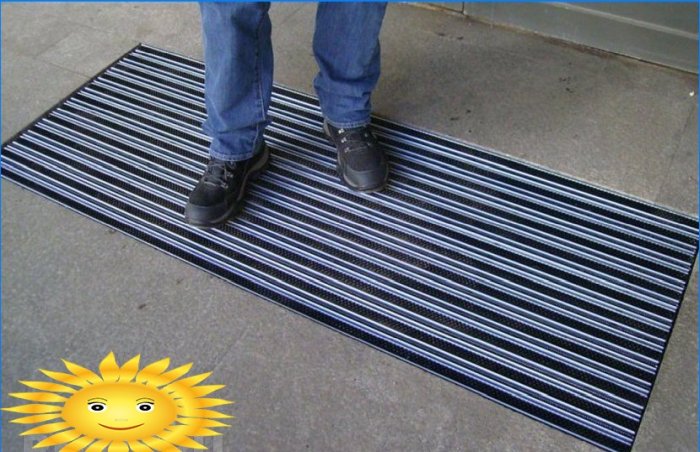
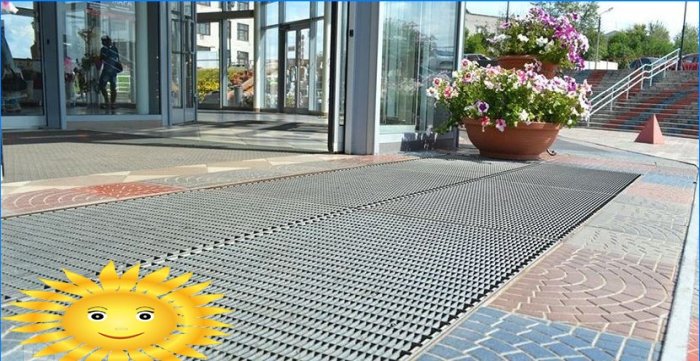

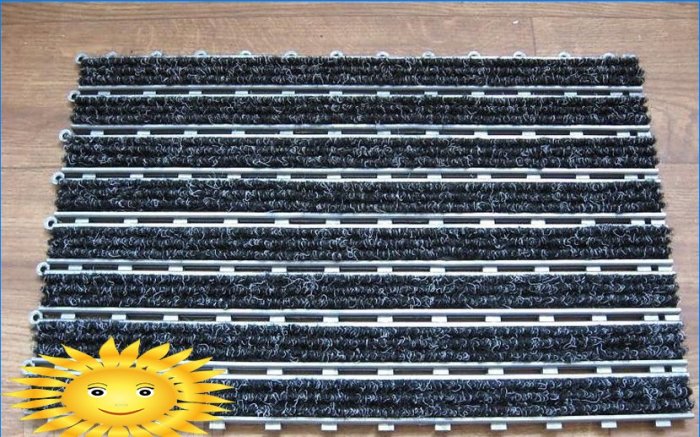
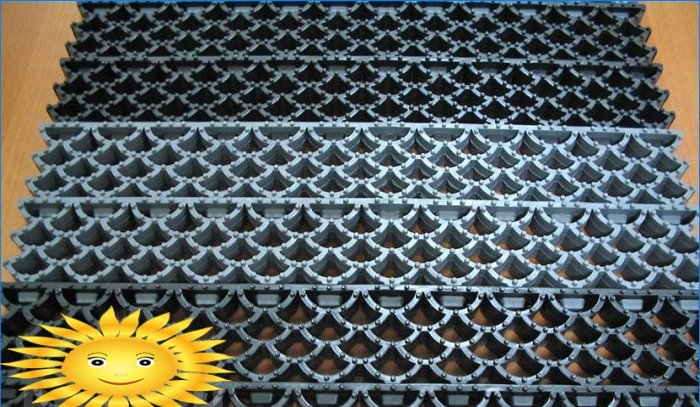
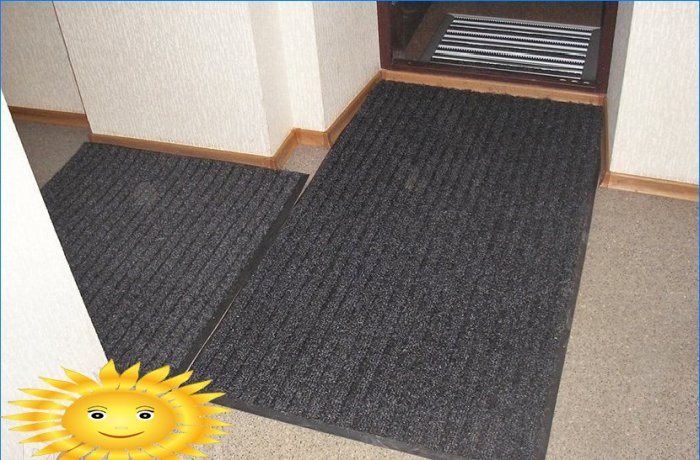
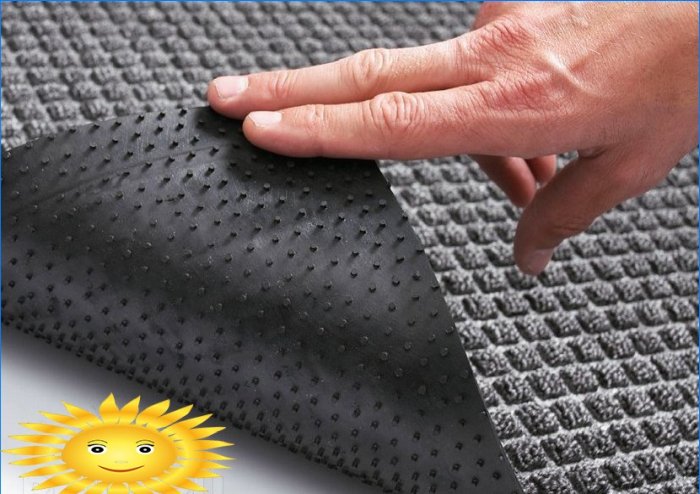
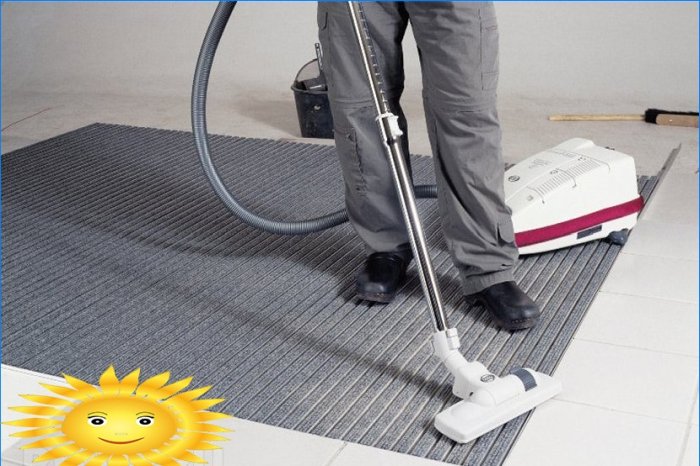
What are the most important characteristics and features to consider when selecting a dirt-protective coating? Are there any specific coatings that are highly recommended for certain surfaces or environments?